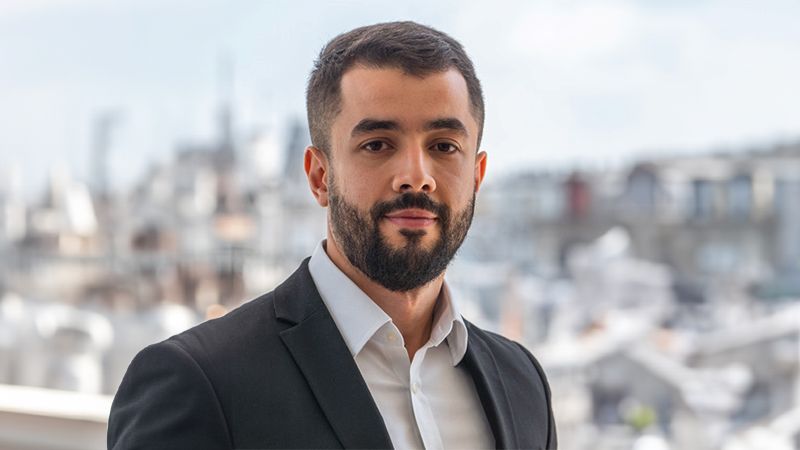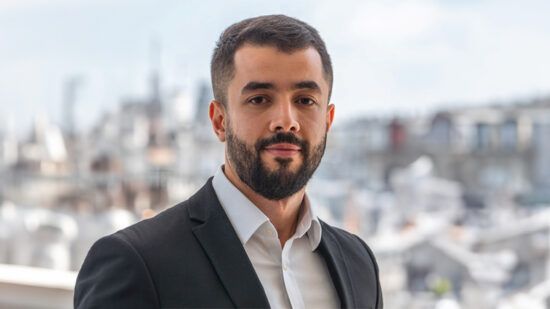Navigating the seas of responsible investment (RI) over the past few years hasn’t exactly been plain sailing. Many would agree that, as an industry, we could have taken advantage of the opportunity of RI’s Golden Era in 2019/20 to better inform investors about the inherent characteristics and biases of these investments. Instead, an easier, more appealing narrative was often shared: make money while doing good.
Even though this is absolutely possible and real – there’s an intrinsic link between innovative technologies tackling socio-environmental challenges and long-term financial returns – the journey can indeed be through choppy waters.
The outflows experienced by sustainable funds globally over Q1 2025 reported by Morningstar in recent weeks only represent 0.27% of the total assets under management (AuM) invested in sustainable strategies. The total AuM remains enormous globally, standing at approximately $3.16trn (as of 24 April 2025, according to Morningstar Sustainalytics). Out of this total, Europe accounts for the vast majority of assets at 84%, with the US representing c.10%.
Additionally, while President Trump’s narrative brings additional volatility to the markets (not only sustainable ones), the uncertainty of his measures and how they will be tackled by countries and companies should reduce over time. A recent example is the newly passed bill in the House that proposes tax changes in the US and includes altering energy tax incentives from the Inflation Reduction Act. The proposed bill’s impact on clean energy tax credits (48E/45Y ITC/PTC) can be considered better than expected, supporting utility-scale developers and residential lease providers. While some credits, like the Residential Clean Energy Credit and EV credits, might be eliminated, and the clean hydrogen credit removed, the overall potential outcome, which is under discussion, provides clarity and reduces policy risk. Markets don’t like uncertainty; definitive news, even if suboptimal, is always better than the unknown, and it seems that we are not far from getting back to port.
With the above in mind, there are still further reasons to be optimistic about the prospects for global RI funds:
- Markets are broadening out after the ‘Magnificent 7’ dominance. Several Mag 7 stocks underperformed in early 2025, with rotation into value, financials and small/mid-caps showing improved market breadth.
- There is a strong consensus in the markets that interest rates will come down in both Europe and the US this year, which is expected to be a catalyst for companies involved in sustainable services and products.
- Many institutional investors continue to demand sustainable investing strategies, particularly those looking to meet climate targets or deploy capital in segregated mandates.
With the above opportunities in mind, we have chosen global equity funds from Square Mile’s Academy of Funds that we believe should not only offer the potential for good financial performance but also offer positive outcomes to the environment and society, as measured by Square Mile’s proprietary sustainability assessment, the 3D Revenue Assessment Framework.
Funds
Pictet Global Environmental Opportunities
| Ethical exclusion | Sustainable solutions | Responsible practices | Impact investor |
| ✓ | ✓ | ✓ | ✓ |
The Pictet Global Environmental Opportunities fund, which has been awarded a Square Mile Responsible A rating, aims to grow investor capital by investing in companies that help alleviate challenges across nine environmental areas as highlighted in a 2009 academic study, Planetary Boundaries Framework.
It begins by excluding companies whose environmental footprint falls outside of any of the areas of this framework. Applying a bottom-up approach, the managers then seek to identify companies that align with it, with a minimum requirement that 20% of their sales help reduce these environmental pressures. This leaves them with a universe of some 400 global stocks that they believe will grow at a rate superior to the global economy over the long term. A detailed company-by-company analysis unearths firms that present the most attractive risk-return characteristics. Assessment includes a view on thematic purity (contribution to revenues from environmental solutions), their historic liquidity and price volatility. Other considerations include the strength of their business franchise, management quality, ESG and valuation metrics. Pictet has a strong heritage in thematic investing, launching their first thematic fund in 1995. We believe therefore that they have strong credentials in designing and managing a fund of this kind, particularly given the high commonality in research and stock selection between this fund and their more established, Water, Nutrition and Clean Energy funds.
Given the bottom-up nature of portfolio construction as well as the relatively nascent area of the market in which it invests, returns could be volatile. We would expect the fund to outperform when environmental themes are in focus and to struggle when they are not, for example when traditional ‘value’ stocks do well.
Ninety One Global Environment
| Ethical exclusion | Sustainable solutions | Responsible practices | Impact investor |
| ✓ | ✓ | ✓ | ✓ |
The managers of this Square Mile Responsible A-rated fund aim to outperform global equity markets and grow investor capital by investing in companies that play a role in the decarbonisation of the planet. Its managers expect firms in which they invest to deliver reduced carbon footprints and superior carbon avoidance, measures that compare a company’s carbon footprint to the status quo. They should report carbon emission reduction targets approved by the Science Based Targets Initiative (SBTI) by 2030, which puts the portfolio on track to be carbon neutral by 2050.
The fund aims to deliver a high environmental impact, employing a process that ensures that at least 50% of a company’s revenues come from environmental solutions relating to renewable energy generation, electrification of transportation, improved energy efficiency, or a combination of the three. Moreover, the team produces an impressive annual impact report, providing aggregated and company-level impact analysis, along with ESG engagement targets and progress made by each company in the portfolio.
The managers believe that sustainable decarbonisation requires major shifts across the three themes they have identified (renewable energy generation, electrification of transportation, improved energy efficiency). Quantitative screens ensure that at least 50% of a company’s revenue comes from environmental solutions linked to these themes. A second screen is then applied, looking at fundamental company-level criteria, specifically, whether the companies have structural growth potential, sustainable returns and a competitive advantage. The managers concurrently analyse market sub-sectors to identify companies that are most attractive from both an environmental and fundamental perspective. All portfolio ideas are then discussed and debated by the team. Once all these inputs are considered, the managers aim to buy the stock as soon as they believe there is intrinsic value upside in the position. The portfolio is therefore constructed in a bottom-up, benchmark-agnostic fashion.
Wellington Global Impact
| Ethical exclusion | Sustainable solutions | Responsible practices | Impact investor |
| ✓ | ✓ | ✓ | ✓ |
The Square Mile Responsible A-rated Wellington Global Impact fund invests in companies that its managers believe offer sustainable solutions to the biggest environmental and social problems facing the world. Its managers impose a particularly high bar for impact, with materiality, additionality and measurability all being influential factors. They believe that the greatest challenges facing the world present some of the greatest investment opportunities which in turn creates an opportunity for innovative companies to benefit from growing end markets. In their view, investors often undervalue the scale and duration of growth which can be extracted from this area of the market which they believe offers greater growth potential, lighter analyst coverage and elevated stock dispersion creating an alpha opportunity for active managers.
The first part of their process is to assess a company’s alignment to one of 11 impact themes based on the team’s own analysis, and that of dedicated research associates, notwithstanding Wellington’s global industry analysts and network of portfolio managers and analysts.
Both quantitative and qualitative factors are considered to fulfil each of the three impact criteria. First, materiality: the impact of activity must be central to the firm. Impact must represent a minimum of 50% of a company’s revenues. Second, additionality: the impact case must fulfil unmet social and environmental needs. The end goal of the analysis is to ensure that the impact has a low probability of being met by other agents. Finally, measurability: the impact case must be quantifiable. Every company must have at least two measurable KPIs that will be tracked across the lifespan of the investment.
Once a company has been identified for inclusion in their impact universe, the team then focuses on the fundamental strength of a business. They look for companies that fit three criteria: uniqueness of assets, the growth prospects for the industry and the company’s discipline when allocating capital. ESG analysis is also fully incorporated into the fundamental analysis of a firm. The resultant portfolio is one with a mid-cap bias and a sizeable emerging markets exposure, which creates a point of differentiation from its peer group.








